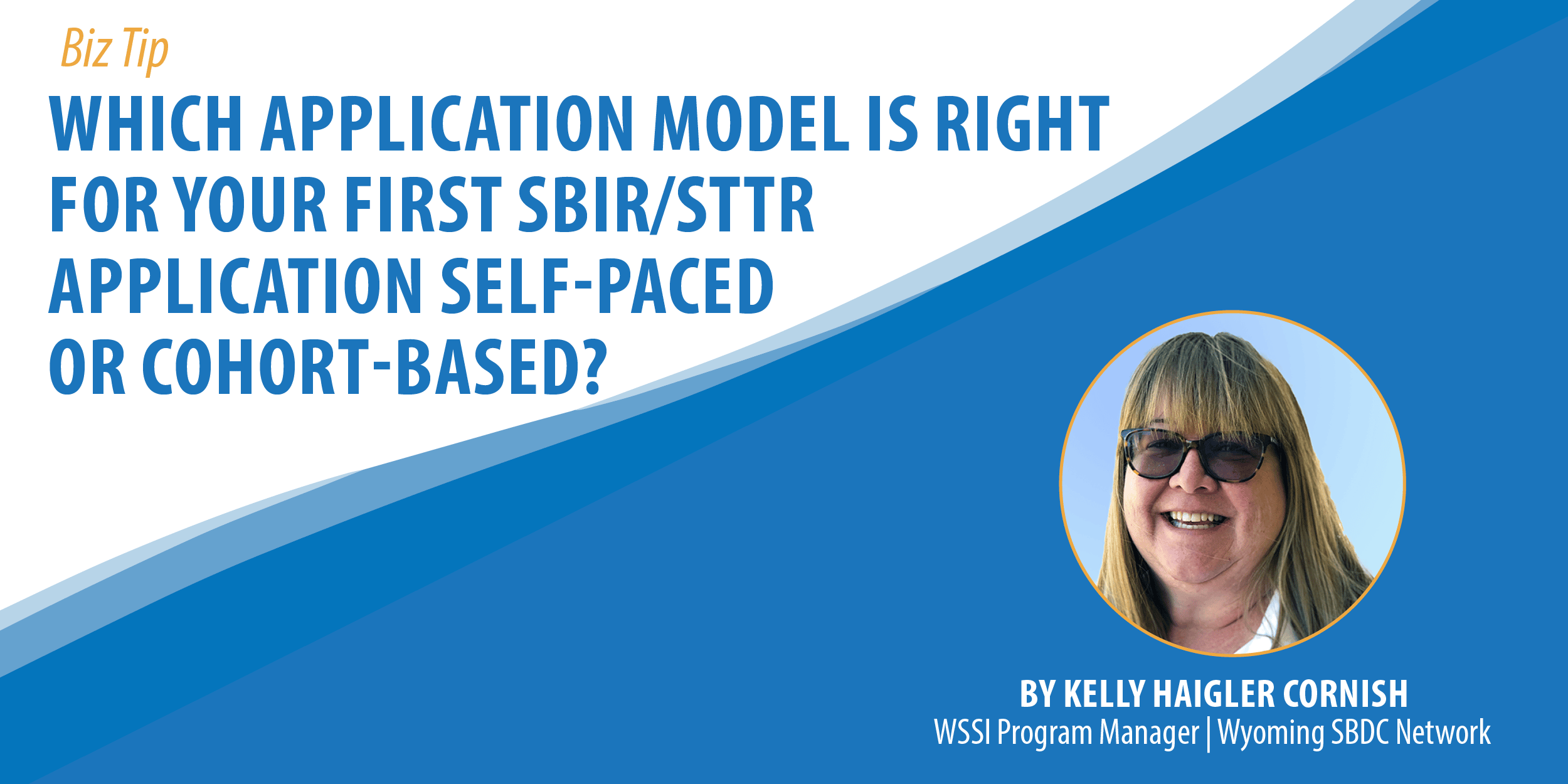Small businesses interested in applying for funding through the federal small business innovation research (SBIR) and small business technology transfer program (STTR) have a couple of options to learn about the program’s intricacies and develop applications. There are many ways to pursue an SBIR or STTR project, and the best way for you will depend on your learning style and work preferences. The two options discussed here are the self-paced and the cohort-based models.
The self-paced model is what it sounds like, the small business uses the resources and tools provided by the Wyoming SBDC Network team to learn how to navigate the SBIR/STTR programs and build a competitive proposal working one-on-one with the SBDC adviser. During the self-paced model, the small business sets its own schedule for completing the proposal development tasks only reaching out for help when questions arise. The self-paced model is for those teams that like the convenience of developing their own schedule and the flexibility that it allows.
Additionally, the self-paced model can create a low-pressure environment with lots of autonomy since the team is not forced to complete tasks on someone else’s timeline. If team members want to work on the support letters before developing the budget, they can choose to do so. If your work schedule is unpredictable, the self-paced model may be a better fit for your team.
The other alternative is the cohort model. This is a collaborative learning environment where a group comes together to work through a program or in this case SBIR or STTR applications. The cohort model is led by a trainer or a team of trainers with SBIR/STTR proposal expertise. Typically, the group meets for a predetermined number of weeks at a designated time each week to tackle specific application tasks following a prescribed schedule. There are assignments each week with goals set by the trainers.
The cohort model is a good fit for those teams interested in a collaborative learning environment with cross-team interaction. Additionally, some teams need the structure, accountability, and support provided by the cohort. The cohort model can be great for those who struggle with time management and planning. Having a group to lean on can be reassuring when you are working through a complex task such as writing a proposal. A cohort is also a good option for less experienced applicants that need additional support with the application and grant submission process. If your team can commit to weekly assignments, the cohort model may be right for your team.
With both the self-paced and cohort model, the small businesses submit the technical proposal and cost budget/justification to the Wyoming SBDC Network team for review and feedback. This feedback includes comments and recommendations on the proposal’s strengths and weaknesses. We like to see the first draft of the proposal approximately four weeks prior to the federal deadline; this timeline allows the small business to incorporate the feedback and prepare for a final review before proposal submission.
Whether your team’s learning and work style are more conducive to a self-paced or cohort model, the Wyoming SBDC Network is here to help with your SBIR or STTR proposal. We are currently planning a National Science Foundation (NSF) SBIR/STTR cohort group for March/April of 2023 with our colleagues at Arkansas SBTDC, Montana Innovation Partnership, and New Mexico Arrowhead Center. If you are a Wyoming-based small business looking at SBIR or STTR opportunities at NSF and would like to be considered for the cohort group, reach out to your Wyoming SBDC regional director or the Wyoming SBIR/STTR Program Manager for more information.
About the Author: Kelly has experience in technology transfer, intellectual property, data rights, indirect cost calculations, federal SBIR and STTR grants and contracts, and other small business topics related to innovation and research. Kelly loves working with existing small businesses to help them discover their innovative edge and working with startups that are taking the next big thing to market.





